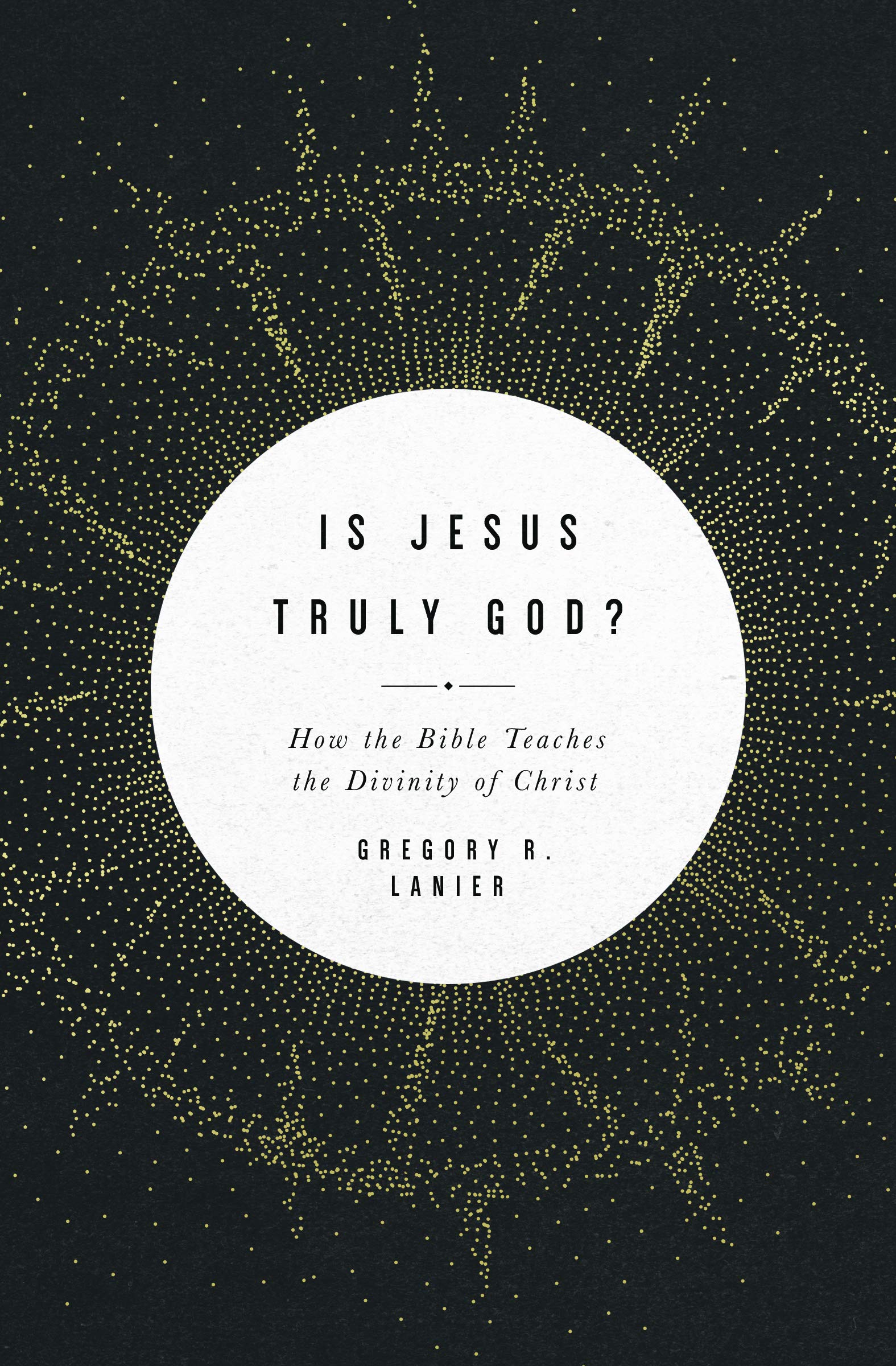A Book Review from Books at a Glance
by W. Edward Glenny
I was pleased when I found this book on the list to review for Books at a Glance. I met Greg Lanier while he was doing his doctoral work at Cambridge, and he had a good reputation there for his organization and research. Since that time, I have been impressed with his work, and this book is no exception. He has the ability to write books like this one that are accessible, and by that I mean succinct, well organized, clear, and practical. And yet he does good research, and he interacts with and refers to excellent scholarly work.
In this book Lanier addresses the question in the title: Is Jesus Truly God? But in addressing this question he desires to help average Christians understand how Scripture teaches that Jesus is God, or how the NT authors teach this truth. He aims to help his readers understand how the Trinitarian Christology found in the earliest creeds was found in the Scriptures by Christians from the earliest days. And he seeks to accomplish that by demonstrating from Scripture that it teaches a “full-orbed divine Christology” (19).
The book consists of six major chapters, after the helpful introduction which leads into the main content and contains a brief overview of the evidence for Jesus’ humanity. Chapter one aims to “unfold the various ways in which Scripture indeed affirms the Son’s real, active, heavenly preexistence within the Godhead” (22). This chapter has material from the Prophets and Psalms that I found clear and valuable, as well as NT evidence. In chapter two Lanier addresses whether Scripture affirms that Jesus is a fully divine “Son,” and in what sense is he God’s “Son”? Here he gives Scriptural evidence that when Scripture refers to Jesus as the Son of God, it means he is the unique, eternally begotten Son of God, and it is not merely a messianic label referring to royal messiahship. Chapter three is one of my favorite parts of the book, because Lanier walks the reader through the NT authors’ use of the OT to establish that Jesus is truly Lord and the God of the OT. He explains how the NT authors “affirm monotheism and proclaim Jesus Christ as fully God without suggesting that they believe in two or more gods” (58). For the NT authors “the God of ancient Israel necessarily includes the divine Son–and always has” (76). The question in chapter four is, did the earliest Christians offer to Jesus the full worship that belongs to the one true God alone? Lanier offers five worship patterns that prove they did (praying, singing, ordinances, ministry in Jesus’ name, and bowing down to Jesus in worship), and then he explores “how the entire religious life of [early] Christians was understood as spiritually partaking in Christ” (78). Through the believer’s union with Christ, Christ molds them into conformity with him through “Christ-shaped worship in all of life” (92).
In chapter five Lanier shows that Jesus is divine in a specific way: “he is the Son in eternal relation to both the Father and the Spirit, and the three persons are fully one God” (94). He does this by giving the biblical evidence that the Spirit is a person and the biblical evidence of the relationship of Jesus to the Father and Spirit from his ministry, Pentecost, the epistles, and the Great Commission. He concludes that the best label for the Christology of the NT is “Trinitarian Christology,” rather than simply referring to a “divine Christ,” “binitarian Christology,” or “Christological monotheism” (103), and believers must make sure they do not bracket out the Spirit in the way they know and experience Jesus’ divine essence (104). In chapter six Lanier summarizes the meaning of seven passages in the NT that directly call Jesus God (Tit 2:13; 2 Pet 1:1; Heb 1:8; 1 John 5:19-20; John 1:1; 10:33; and 20:28) and five other passages that are still debated (John 1:18; Acts 20:28; Gal 2:20; 1 Tim 3:16; and Rom 9:5). He also briefly discusses other exalted terms used to refer to Jesus.
The helpful conclusion briefly summarizes each of the chapters and the meaning of four key passages, that “bring everything together,” demonstrating “the full humanity and full divinity of Jesus Christ” (120). Those important passages are Philippians 2:6-11; Colossians 1:15-20; Hebrews 1:1-4; and John 1:1-18. It is interesting that these four passages are the closest thing in the NT to an extended argument for the divinity of Jesus. That is because the NT authors did not feel a need to defend the deity of Jesus; the fact that Jesus is God was the inescapable conclusion of all they had seen and heard, and they assumed it (125-26).
There is also a Selected Bibliography, a General Index, and a Scripture Index. The Bibliography is especially important, and the reader of this little book would do well to read the footnotes and become familiar with the sources in the Bibliography because they are excellent, up-to-date resources that Lanier draws on throughout the book. In fact, Lanier’s ability to draw on up-to-date evidence concerning Trinitarian Christology and to relate it to the biblical text, showing how it is grounded in Scripture, is the greatest strength of this short book. It is a wonderful entrée into the Scriptural roots of credal Christology, and I would recommend this book for anyone looking for a book on this subject. It is especially suited for lay people, Bible study groups, and even college classes.
W. Edward Glenny
eglenny@unwsp.edu
